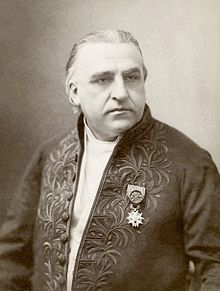
Jean-Martin Charcot (29 November 1825 - 16 August 1893) was a French neurologist. His work greatly impacted the developing fields of neurology and psychology
Life and Work
Charcot worked and taught at the famous Salpêtrière Hospital for more than thirty years. His reputation as an instructor drew students from all over Europe. In 1882, he established a neurology clinic at Salpêtrière, which was the first of its kind in Europe.
Charcot's primary focus was neurology. He was the first to describe a disorder known as Charcot joint, a degeneration of joint surfaces resulting in loss of proprioception. He researched the functions of different parts of the brain and the role of arteries in cerebral hemorrhage.
He was also one of the first to describe Charcot-Marie-Tooth disease (CMT). The announcement was made simultaneously with Pierre Marie or France and Howard Henry Tooth of England. The disease is also sometimes called peroneal muscular atrophy or Charcot's arthropathy.
But Charcot's most enduring work is that on hypnosis and hysteria. Charcot believed that hysteria was a neurological disorder caused by hereditary problems in the nervous system. He used hypnosis to induce a state of hysteria in patients and study the results.
Students
Charcot is just as famous for his students: Sigmund Freud, Joseph Babinski, Pierre Janet, Georges Gilles de la Tourette, and Alfred Binet.




